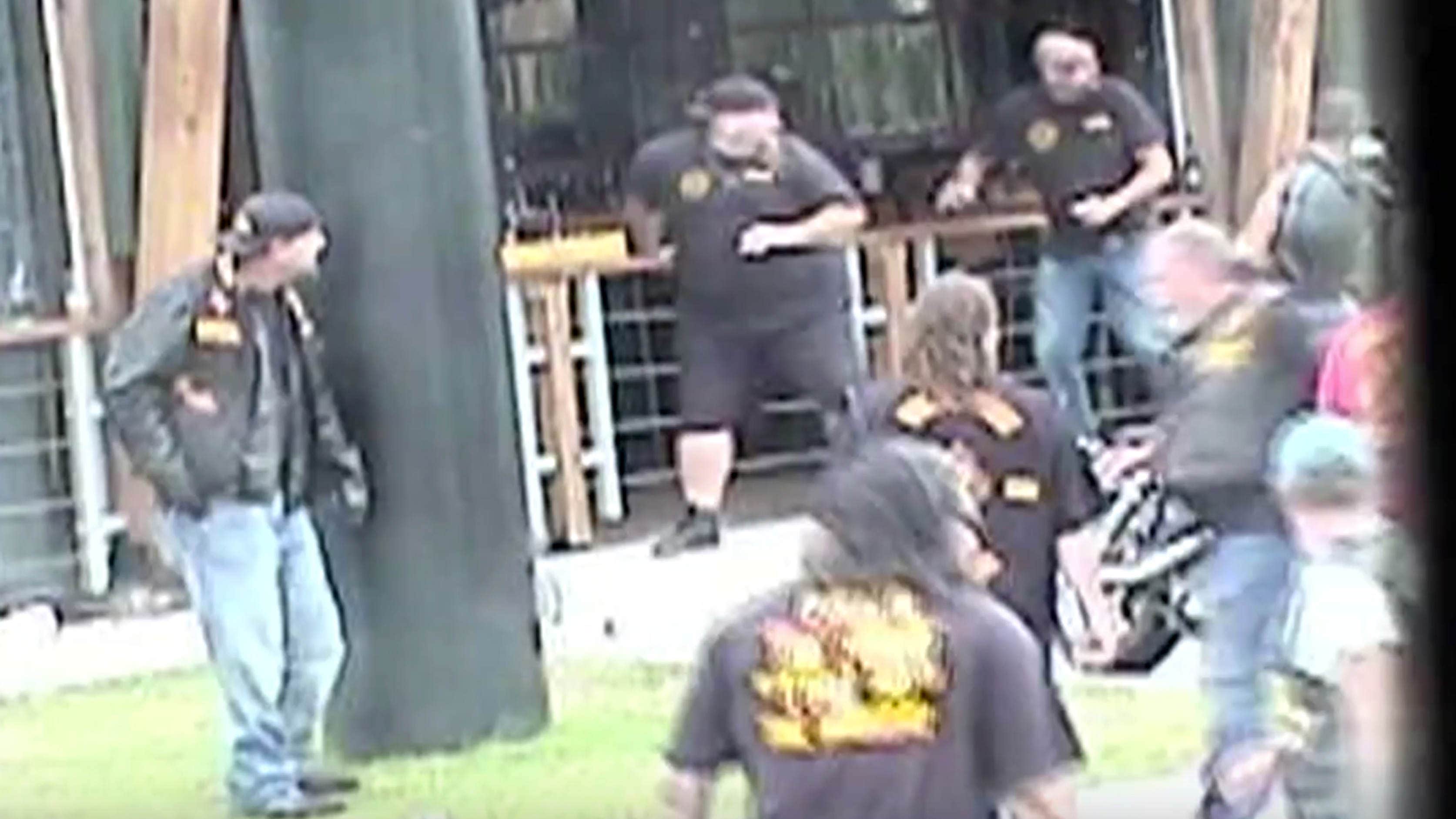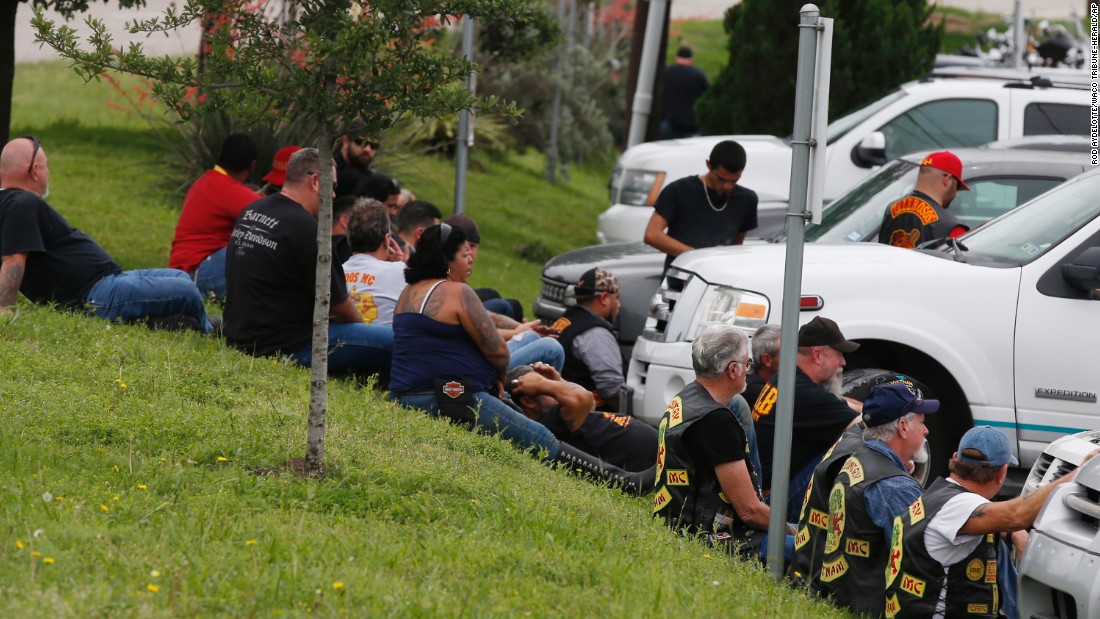Biker gang shooting in Waco: A violent clash between rival motorcycle gangs rocked the Texas city, leaving a trail of bloodshed and raising questions about gang activity and law enforcement response. The incident, unfolding with shocking speed, involved multiple gangs, a variety of weaponry, and a significant number of casualties. This event sent shockwaves through the community and sparked intense media scrutiny, forcing a re-evaluation of gang-related violence in the region and beyond.
The history of biker gang presence in Waco provides crucial context. Decades of simmering tensions between various clubs culminated in the brutal confrontation. The precise sequence of events, the identities of those involved, and the specific motivations remain under investigation. However, initial reports paint a picture of a pre-meditated attack that quickly escalated into a chaotic gunfight, leaving behind a scene of unimaginable violence.
The Waco Biker Gang Shootout: A Comprehensive Overview
The May 17, 2015, shootout involving multiple biker gangs in Waco, Texas, remains a significant event in the history of biker gang violence in the United States. This incident resulted in nine deaths and numerous injuries, prompting a large-scale law enforcement response and a significant public discourse on biker gang activity and its societal impact. This article provides a detailed examination of the event, its historical context, the aftermath, and its broader implications.
Historical Context of Biker Gangs in Waco
Waco, like many other cities in the American Southwest, has a history of biker gang presence, though it wasn’t always as prominent as in some other locations. The city’s strategic location and its relative openness to various subcultures contributed to the establishment of several biker gang chapters. While specific historical data on biker gang activity in Waco prior to 2015 is limited in public records, anecdotal evidence suggests a long-standing presence, with periods of increased and decreased activity.
Different biker gangs operating in Waco, prior to the 2015 shooting, likely engaged in various activities ranging from organized crime to social gatherings. Competition for territory and resources, a common feature in the biker gang subculture, may have played a role in escalating tensions leading up to the shootout. Detailed information on the specific activities of individual gangs in Waco before 2015 is often not publicly available due to the secretive nature of these organizations.
The Waco biker gang shooting left a trail of devastation, impacting families across the region. For those seeking solace and remembrance during this difficult time, resources like stories from beyond discover the heartfelt obituaries at mundwiler funeral home offer comfort. The aftermath of such violence underscores the importance of community support in the wake of tragedy.
A timeline of key events leading up to the Twin Peaks shootout remains incomplete in publicly available information. However, it is widely understood that rising tensions between rival biker gangs, particularly the Bandidos and Cossacks, fueled the escalating conflict. This escalated in the months leading up to the May 17th confrontation.
The Waco Biker Gang Shooting Incident: Events and Participants
The Twin Peaks shootout occurred on Sunday, May 17, 2015, at the Twin Peaks restaurant in Waco, Texas. The clash involved numerous members of several biker gangs, primarily the Bandidos Motorcycle Club and the Cossacks Motorcycle Club. The conflict erupted during a meeting of the biker gangs, escalating rapidly into a large-scale brawl and gunfire. Various weapons, including handguns, knives, and other improvised weapons were used.
The ensuing violence resulted in nine fatalities and numerous injuries. The precise number of individuals involved remains unclear, but hundreds of bikers were present at the scene. The restaurant itself sustained significant damage from the gunfire and the ensuing melee.
| Time | Event | Location | Involved Gangs |
|---|---|---|---|
| 11:00 AM – 12:00 PM (approx) | Gathering of biker gang members at Twin Peaks | Twin Peaks Restaurant, Waco, TX | Bandidos, Cossacks, and others |
| 12:00 PM – 1:00 PM (approx) | Initial altercation and escalation of violence | Twin Peaks Restaurant, Waco, TX | Bandidos, Cossacks, and others |
| 1:00 PM – 2:00 PM (approx) | Large-scale shootout and melee | Twin Peaks Restaurant, Waco, TX | Bandidos, Cossacks, and others |
| 2:00 PM onwards | Law enforcement response and arrests | Twin Peaks Restaurant, Waco, TX | All involved gangs |
Law Enforcement Response and Aftermath, Biker gang shooting in waco
Law enforcement agencies responded swiftly to the shootout, deploying numerous officers and SWAT teams to secure the scene and apprehend suspects. The large number of participants and the intensity of the violence presented significant challenges to law enforcement. Arrests were made en masse, with hundreds of individuals detained. The ensuing legal proceedings involved numerous trials and sentencing hearings, with varying outcomes for those involved.
The long-term impact of the shooting on Waco included increased scrutiny of biker gang activity, enhanced law enforcement strategies to prevent future incidents, and a heightened sense of community concern and unease. The incident also spurred debate about the balance between public safety and individual rights in the context of law enforcement’s response to organized crime.
Societal Impact and Public Perception

Source: foxnews.com
The Waco shootout generated significant media attention nationwide, shaping public perception of biker gangs and the potential for large-scale violence associated with organized crime. The event sparked intense public debate regarding the role of law enforcement in managing biker gang activity and the effectiveness of strategies to prevent future incidents. Comparisons to other large-scale biker gang clashes, such as the Hollister riot of 1947, highlight the evolving nature of these events and the continuing challenges they pose to law enforcement and society.
A hypothetical public awareness campaign addressing negative perceptions of biker gangs could focus on differentiating between the criminal activities of some gangs and the activities of other, more law-abiding motorcycle clubs. Such a campaign might also emphasize the need for community engagement and collaboration to address the underlying issues that contribute to gang violence.
Illustrative Depiction of the Scene

Source: turner.com
The scene of the shootout was chaotic and violent. The parking lot of the Twin Peaks restaurant was littered with shattered glass, discarded weapons, and the aftermath of a brutal melee. The air was thick with the smell of gunpowder, sweat, and blood. Screams, shouts, and the sounds of gunfire echoed through the area. The visual impact was one of utter destruction and mayhem, a scene of intense violence and widespread panic.
One individual involved, a member of the Cossacks Motorcycle Club, might be described as a large, heavily built man with tattoos covering his arms and neck. His face, contorted in a grimace of either pain or rage, was streaked with blood. His actions during the event might be described as a mixture of aggression and desperation, fighting to defend himself amidst the chaos.
The emotional impact on witnesses and bystanders was immense, many reporting long-lasting psychological trauma from witnessing the brutality of the event.
Wrap-Up: Biker Gang Shooting In Waco
The Waco biker gang shooting serves as a stark reminder of the dangers posed by organized crime and the ongoing challenges faced by law enforcement in combating gang violence. The incident’s aftermath, marked by arrests, trials, and a lingering sense of unease within the community, highlights the far-reaching consequences of such events. The long-term impact on Waco and the national conversation surrounding biker gangs remains to be seen, but the tragedy undoubtedly demands a thorough investigation and comprehensive strategies to prevent future occurrences.
